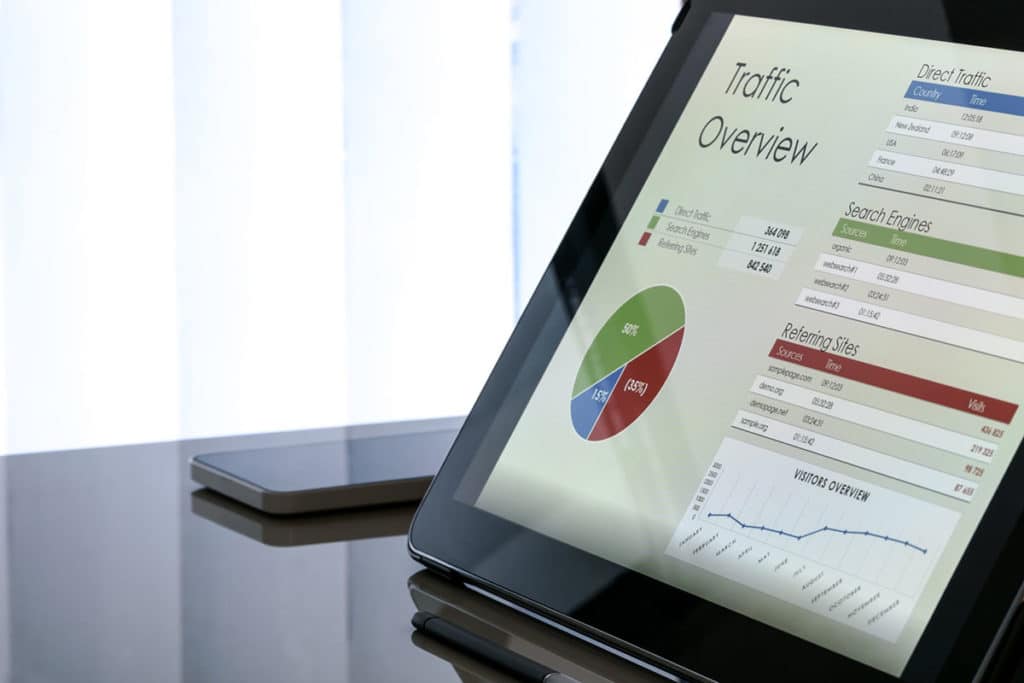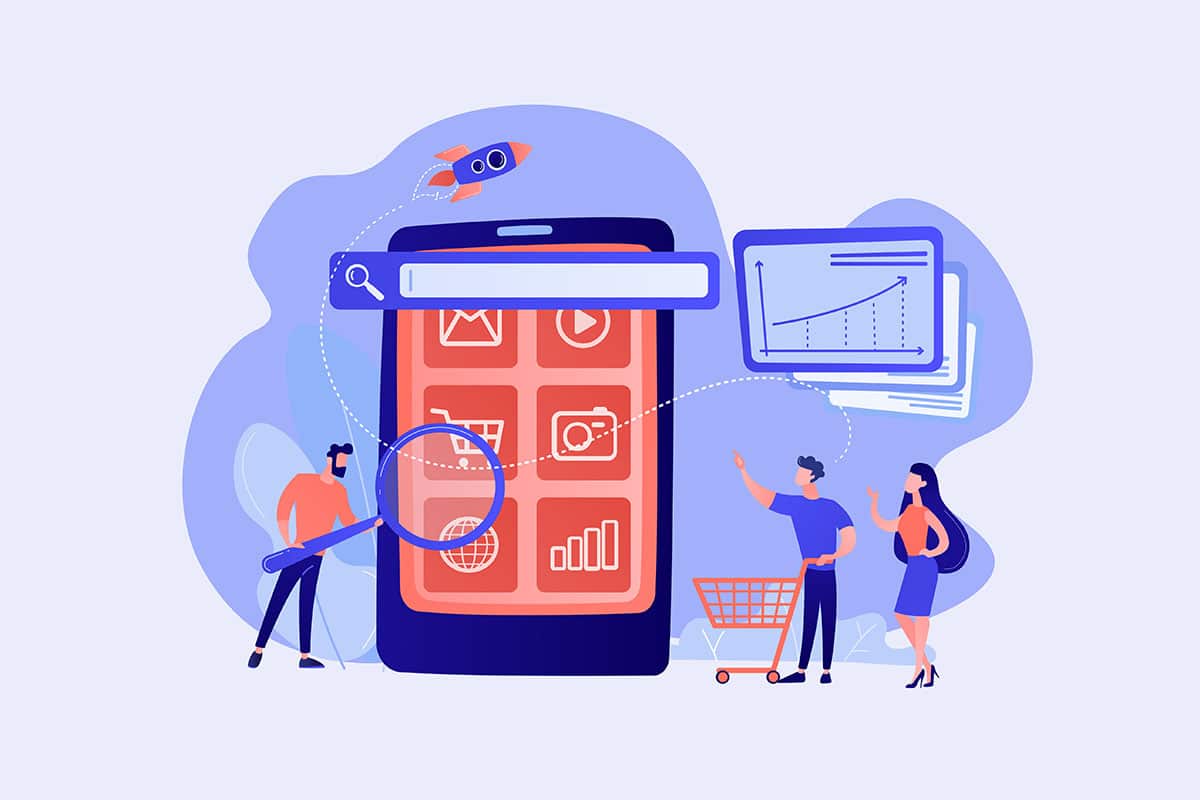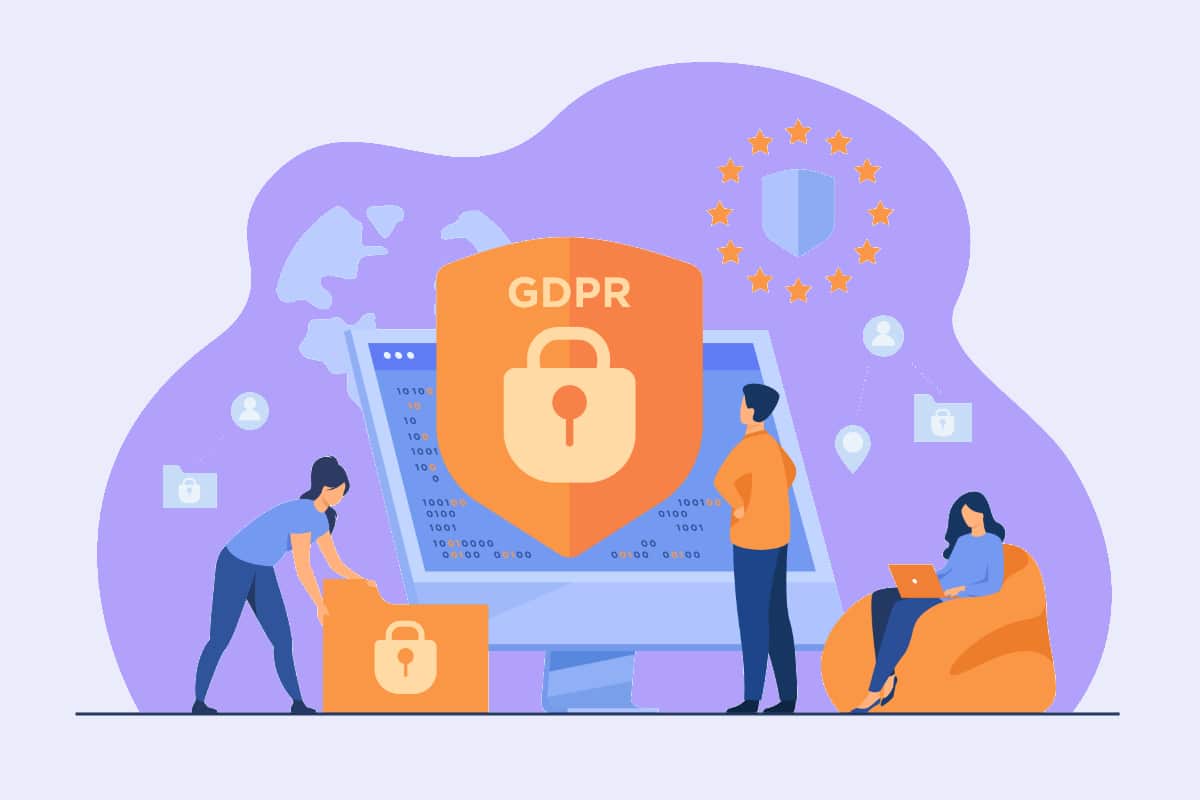The first objective of an e-commerce site is obviously to attract new customers every day. But in order to do this, you need to be able to make customers stay on your site. Without this, your potential customers may leave your site. One of the factors that can allow you to check the interest of visitors in your products is the bounce rate. It is the bounce rate that confirms whether your site is really user-friendly or not. Let's find out how you can use this data for your e-commerce.
What is the bounce rate?
The bounce rate is the percentage of people who have left your website without viewing another article or page. In other words, this indicator measures the number of visitors who leave the site after viewing the first page. A good bounce rate is usually between 25% and 40%.
You will therefore understand that for an e-commerce site, when this rate is high, it means that you have not targeted your visitors properly. And consequently, that the items or products that you offer and your site do not interest them. As a result, Google interprets this lack of visitor interest as a lack of relevance of your site. Result: your website is downgraded.
In addition, it is important to specify that the bounce rate is an indicator that takes into account two variables. It is the number of pages that a visitor consults on a website and the time spent on the page in question. For example, imagine that a visitor takes 10 minutes or more to read an article. You might think that since the time is still considerable, the bounce rate will not be influenced!
Indeed, as soon as the user does not click on another page or another product, the percentage of bounce will increase. The primary objective of an e-commerce site is to make the visitor see as many pages as possible, so that he buys a product or requests a quote. A visitor who stops at a single page will probably not have found what he wants. It is therefore quite unlikely that they will have made a purchase.
Why is the bounce rate important for your e-commerce?
The bounce rate contributes greatly to the positioning of your e-commerce site. It is one of the most important performance indicators of a company's website activity. So, when your bounce rate is low, your e-commerce site will be much more likely to appear among the first search results. Why is this? Because visitors will visit other pages on your website after visiting the first page. This entry page may not be the home page of your site.
On the other hand, when the bounce rate is high, it means that the vast majority of visitors to your e-commerce site are viewing a single page. After that, they leave the site or remain inactive for a long time (this duration is defined according to the session duration set by Google Analytics) .
The bounce rate is therefore of paramount importance for two main reasons:
- The first is that it indicates the interest that a user or visitor has in your site;
- the second is that Google integrates this indicator to improve or not your positioning on the internet. So bounce rate is more or less related to SEO.
How to analyse your bounce rate?
Here your best companion will be Google Analytics. Here you can examine your bounce rate. Let's see how.
Determine the overall bounce rate of your e-commerce site
Once you are in Google Analytics, you can go into acquisition and then overview and see not only your overall bounce rate but also your bounce rate per page. You can also go to behavior and then overview, in order to examine the general bounce rate of your website. The bounce rate can therefore be measured on two levels:
- at the level of the pages of your e-commerce site: in other words, all the users who have visited a specific page and left it;
- and at site level: this is the general bounce rate on all the pages of the site. This rate actually considers all the pages of your website according to the duration you have chosen.
We also saw above that the bounce rate takes two factors into account. These are the number of pages viewed by the visitor and the length of time the visitor stayed on a page. And let's be clear, you can also examine these two parameters with the bounce rate in Google Analytics.
In fact, in your analysis, you must absolutely integrate these two variables. Because they will also indicate whether your e-commerce site is performing well or not. You should also dig into your account to identify other statistics and figures that can help you better analyse and optimise your overall bounce rate. In particular, the bounce rate by acquisition channel, by country and by page. Remember that the bounce rate alone will not really tell you anything. Rather, it represents information that you can use to derive several important data.

Identify the bounce rate per page
By measuring the bounce rate per page, you will identify those with a high rate and put in place ways to rectify them first. The fact is that when the rate of pages on the site is high, it will inevitably impact the overall bounce rate of the site. So if you find that the bounce rate is high, you will need to do further research. Indeed, this percentage alone should not lead you to judge the performance or not of your e-commerce site.
Once you have identified the bounce rate per page and the overall bounce rate of your site, you can proceed to analyse it.
Compare bounce rate and session duration
When the overall bounce rate is low (less than 40%), your e-commerce site is doing very well. On the other hand, if it is high (above 50%), you will need to carry out an in-depth analysis. Remember that the purpose of this analysis is to check the performance of your site.
The session duration is the time that visitors spend on one or more pages of your site. At this level, you should compare the bounce rate and the average session length. By doing so, you will know if your content, your articles, your products are interesting or not to the Internet users.
Let's assume that your site has an FAQ page through which you make deliveries, receive returns and, above all, answer your visitors' questions. If you check the bounce rate of this page, you will see that it is high. But you also see that the time spent on this page is quite substantial. In this case, it means that the majority of visitors are still finding satisfaction for their various concerns.
However, if the bounce rate on your homepage is high and the time displayed is also significant, this is not a good sign. The purpose of the homepage is to direct visitors to other pages that better present your products. So if the session time is high there, it means that visitors are reading your content. But once they've filled in, they leave the site. In this case, you really need to improve your content and the way you welcome your visitors. Only then will they want to consult your product sheets or make purchases.
Compare bounce rates between pages
We understand more and more that the general bounce rate of an e-commerce site is not enough to really justify visitor behaviour. So when you identify the bounce rate on each page of your site, you need to take the time to compare them.
For example, you have 100 pages on your e-commerce site. After verification, the bounce rate of 80 pages is 40%. Of these, visitors still consult other pages on the site. Which is good! But at the same time, the bounce rate of the remaining 20 pages is above 70%. In this case, it is clear that the bounce rate of these last pages will inevitably impact the overall rate of your site.
By identifying these pages, you will know exactly where your visitors seem to dislike your site. By doing so, you will have access to several useful data to better manage your e-commerce. You will know, among other things, the most popular landing pages, the new and regular visitors, their gender, their average age and the browsers used.
After this analysis, you will see the importance of the bounce rate, because it is thanks to it that you will detect the specific problems of your services. From there, you will be able to put in place strategies to optimise this rate in general on your site. But also on each specific page of your e-commerce site.
Also read: Maximising your LTV: have you thought about activating all the levers?
How to optimise a high bounce rate on your e-commerce site?
Don't worry if your site has a high bounce rate. Why not? Because this percentage can be quickly corrected and reduced. In fact, it can even be used to optimise your SEO and the results of your Google Adwords or advertising campaigns. So let's take a look at what you can do to reduce the bounce rate on your site if it is high.
1. Personalise the welcome for each visitor
You must ensure that the visitor's first impression is very good. This is very important! If there is not enough information, too much information, unsuitable plugins or an unattractive design, your visitors will turn away very quickly. You should therefore avoid such situations at all costs.
To achieve this, welcome your visitors and potential customers in the best possible way. From the very first seconds your visitors are on your website, offer them quality follow-up and support. They should feel a warm welcome as soon as they open your site. It's as if you were there in front of them. Give them the freedom to choose and avoid flash animations, pop-up ads and music. As soon as your site opens, if your visitor is invaded by these marketing solutions, they will be disturbed and will leave as quickly as they came.

So remove all blocking elements and heavy plugins from your site. This will significantly reduce the loading time of your pages. This factor is all the more important since the majority (57%) of visitors leave a page after 3 seconds of waiting. The objective is to lead the visitor to several other product pages:
- encourage them to browse other content (articles, product sheets);
- include relevant external links in your texts;
- offer help in finding the product they want to buy;
- offer frequent sales, special collaborations, new collections and black Friday.
2. Target your audience and provide relevant and useful content
To best provide your services and sell your products, you will need to target your customers. When visitors are not well-targeted, it can affect the bounce rate. Your audience and the services you offer must match the customers you are targeting. In fact, to stay on your site, your offers must have added value. It is precisely this added value that will make visitors want to stay. You should therefore review the pages of your site and work on :
- the relevance of the topics: your content must be relevant;
- the format in which you offer your topics, your articles, your content in short. If you are, for example, a cosmetics or jewellery design company, you will be more likely to use videos and tutorials;
- content structuring: your content must be able to respond to your visitors' needs and questions. You must therefore pay close attention to the writing of your content;
- SEO: when writing product sheets, for example, integrate HTML tags and litres. And also choose the right keywords and adopt the right semantics. But above all, avoid placing links to competing sites;
Furthermore, when targeting your audience, make sure that the services offered are suitable for all categories of customer profiles. Your content and personalisation should be tailored to your targets in a precise manner.
3. Improve the ergonomics of your e-commerce site
An ergonomic website is one that is intuitive, structured, organised, attractive, beautiful and easy to navigate. The ergonomics of your website is therefore essential. For this, scrupulously respect the 3-click rule. According to this rule, access to your e-commerce site should be possible in a maximum of three clicks.
In fact, the more user-friendly your site is, the more users will visit other pages. And the lower the bounce rate. Which is good for your business. In addition, it is important that the design of your site is flawless. It needs to be attractive, clean and simple. You need to think about making life easier for your users
4. Improve your landing pages
Your landing pages must be attractive. The design of your site is essential. You must therefore take care of it and work conscientiously on it. The design contributes greatly to whether or not your visitors feel confident. For 48% of Internet users, the design of a website is the first criterion on which they decide whether or not the website in question is credible. It is therefore important that your website reflects the image of your company and its professionalism.
In addition, navigation should be easy, especially on mobile phones. You should therefore pay particular attention to the font, colours, illustrations and images and the content, so that your site is really attractive.

5. Reduce your page load time
A page that is slow to open can quickly test a visitor's patience. It is therefore one of the reasons why visitors to a site bounce. It has been shown that when a page takes up to three seconds to load, your bounce rate increases significantly.
Moreover, coder.com informs that to decrease your bounce rate by 7%, you will only have to reduce your loading time by 1 second! So try to detect the speed problems related to each of your pages and implement actions to remedy them.
6. Get your visitors to click with Call to Actions
CTAs are designed to encourage the user to click through to one or more other pages on your site. This will also reduce your bounce rate. You must therefore position them on your pages so that they are really visible in order to attract visitors. These are expressions like: ¨Add to cart¨, ¨See product¨, ¨See description¨, ¨Pass to payment¨,...
In order to make them visible, opt for a different colour from your content texts for example. Also, to make the visitor feel concerned, use action verbs for the ¨Callto Actions¨.
Bounce rate: in summary
Ultimately, the bounce rate is a value that when it is low is good for your business. However, when it is high, you should try to remedy it. In order to do this, it is important to analyse this result in depth by combining it with other indicators. Once you have done this, you can take the necessary actions to generate more conversions to your website pages. In addition, your e-commerce will benefit positively.
Now you know how to use bounce rate to make your e-commerce business thrive. Did you find this article useful? Feel free to reply in comments.



